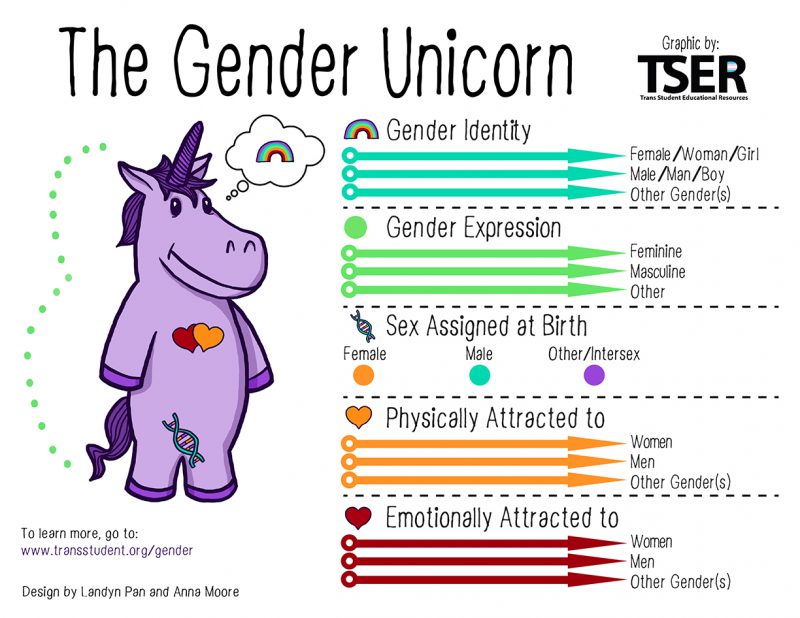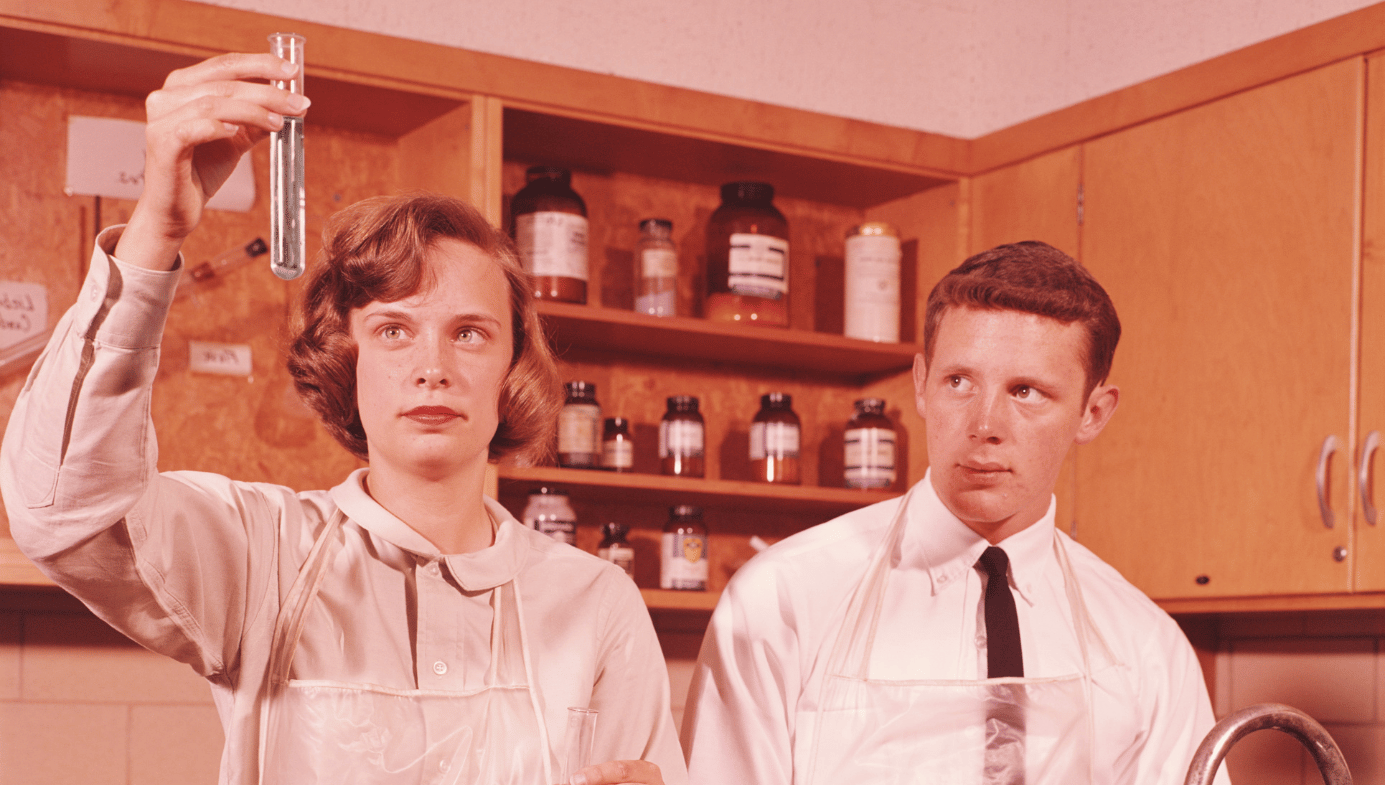Top Stories
The Real Gender Trouble
Although they don’t usually acknowledge it, transgender activists make philosophical claims, which are susceptible to philosophical critique.

A Review of When Harry Became Sally: Responding to the Transgender Moment by Ryan T. Anderson, Encounter Books (February, 2018) 264 pages.

In his new book, When Harry Became Sally, Ryan Anderson provides a sustained critique of the transgender rights movement. The book’s irreverent title is sure to turn heads; its contents will probably change some minds, too. Although Anderson is an outspoken social conservative, most of his arguments in this work could be advanced by someone who is politically left of center. Anderson is at pains to distinguish his criticism of transgender activists – by which he means people who promote a certain ideology, regardless of their sexual identities – from condemnation of transgender individuals as such. Surely he knows that such protestations will not insulate him from the charge of transphobic hatred. Here I analyze Anderson’s criticisms of the transgender movement and offer a few criticisms of my own, which I intend to be constructive in spirit.
The Transgender Movement’s Philosophy
Although they don’t usually acknowledge it, transgender activists make philosophical claims, which are susceptible to philosophical critique. Anderson dwells on these commitments most heavily in chapter 2, “What Transgender Activists Say.” He writes: “People say that we live in a postmodern age that has rejected metaphysics. That’s not quite true. We live in a postmodern age that promotes an alternative metaphysics.” The assertion that “A transgender boy is a boy, not merely a girl who identifies as a boy” is a metaphysical claim, though transgender activists “dress it up as a scientific or a medical claim” to avoid philosophical debate and the suggestion of controversy.
And the metaphysical claims are subject to change without warning or fanfare. In 2005, the pro-trans Human Rights Campaign referred to “birth sex” and “biological sex” as things that were distinct from, and capable of being in conflict with, gender identity. More recent rhetoric avoids mention of biological sex, substituting “sex assigned at birth.” This leaves mysterious what people observe with ultrasounds and announce at “gender reveal” parties if the sex of the unborn child has yet to be assigned. Previously transgender activists acknowledged that at least one aspect of a person’s sexual identity is the product of nature; the new language suggests it is all socially constructed. Present trends are toward ever more radical forms of subjectivism. Some now regard the “assignment” of sex at birth as a human rights violation.
The differences between two graphics used by transgender activists illustrates the trend. The Genderbread Person v3.3 (2015), includes biological sex as an identity category. By contrast the Gender Unicorn (2017), puts “sex assigned at birth” in the place of “biological sex” and adds a third category to the male/female dichotomy: other/intersex. I wonder how many people are “assigned” anything other than male, female or intersex at birth. And how do those people feel about being lumped together with the intersex folks for categorization purposes? The double helix at the unicorn’s cartoon crotch is the only acknowledgement that biology has something to do with sexuality – as if DNA were somehow more relevant to the genitals than to the rest of the body.


Instead of vouching for biology, the scientific and medical establishments have adopted the transgender movement’s preferred terminology and conceptual framework (as have many educators). In an expert declaration to a federal court regarding North Carolina’s so-called “bathroom bill,” Dr. Deanna Adkins, a professor at Duke University School of Medicine and director of the Duke Center for Child and Adolescent Gender Care, asserted that gender identity is “the only medically supported determinate of sex” when there is not “complete alignment among sex-related characteristics” including gender identity. Moreover, in such cases “It is counter to medical science to use chromosomes, hormones, internal reproductive organs, external genitalia, or secondary sex characteristics to override gender identity for the purposes of classifying someone as male or female.”
Anderson points out that, “This is a remarkable claim, not least because the argument was recently that gender is only a social construct, while sex is a biological reality. Now, activists claim that gender identity is destiny, while biological sex is the social construct.” He queries whether this standard should apply to any other animals besides humans. But this line of interrogation misfires. Adkins doesn’t seem to be opposed to using external features to identify sex when there is no conflict with gender identity (presumably, only humans have gender identities). A better question to ask Adkins is why gender identity takes precedence over external features when they do conflict.
Adkins defines gender identity as “a person’s inner sense of belonging to a particular gender, such as male or female.” The American Psychological Association offers a similar definition: “a person’s internal sense of being male, female or something else.” Both definitions imply that there is an unspecified number of alternatives to male and female, and neither explains why ‘male’ and ‘female’ constitute genders in the first place. Nor is it clear what the feeling of being a male is if it is distinct from the feeling of being embodied as a male. Until we have satisfactory answers to these questions, we don’t know what gender identity is, or why it is considered the sole determinant of sex.
When gender identity is divorced from biology, the only way to distinguish a male from a female gender identity is to rely on gender stereotypes. We can imagine a woman’s mind in a man’s body, or a biological woman who defies gender stereotypes with regard to preferences and behavior. But try to say something substantive about the gender identity “woman” – something that would distinguish it from other gender identities – without referencing either biology or gender stereotypes. The DSM-5, the most recent edition of American Psychological Association’s guide for identifying mental illnesses, includes having a “strong preference for toys, games or other activities stereotypically used or engaged in by the other gender” among its diagnostic criteria for gender dysphoria. Why not assume that children with such preferences are simply members of their biological sex who defy the stereotypes?
The epistemic claims made by transgender activists are no less subject to scrutiny. Supposedly, we should accept the word of children when they say they have a certain gender identity. Anderson asks whether a pre-pubescent child is an authority on what it is to be a man or a woman. It isn’t as though we generally defer to their judgment. To this I would add that some people do not transition until late in life. By that point, they have for many years believed – falsely, they later come to think – that their genders are whatever was “assigned” at birth. If transgender individuals can be mistaken about their genders prior to transitioning, then why assume they couldn’t possibly be mistaken about their gender after, or in the course of, transitioning? Why assume that an internal sense of gender cannot be outweighed by contrary external evidence?

Consequences for society
The American Civil Liberties Union describes itself as an organization that “champions transgender people’s right to be themselves,” which suggests that transgender activists are motivated by a “live and let live” philosophy. But because the underlying conception of selfhood is so radical, this implies a right to live in a society devoid of gender norms. It is far from clear that most people would flourish under these conditions. “In a culture where transgender identities are not only affirmed, but celebrated,” Anderson writes, “everyone will be compelled to construct their own gender identities, unaided by a common understanding of sex differences and why they matter.”
Transforming society along these lines necessarily has implications for the rights and interests of others. Privacy is a case in point. According to transgender activists, transgender individuals have a right to access all areas reserved for the gender that they identify as. That is to all areas, such as bathrooms and locker rooms, traditionally reserved for people of the opposite biological sex. In its final year, the Obama administration capitulated to these demands with a series of departmental decrees. Under the Department of Housing and Urban Development’s September 20, 2016 “Gender Identity Rule” (an amendment to the Equal Access Rule published in 2012), shelters for battered women are required to provide the same accommodations to anyone identifying as women – with no documentation required or “intrusive questions” asked.
The new policy for educational facilities (now rescinded by the Trump administration) maintained that transgender students have the right to use whatever facilities were suitable to their proclaimed gender identities. Compromises such as the construction of new single-occupancy restrooms, or requirements that transgender students to change behind a shower curtain while using the opposite sex’s locker room, were categorically rejected as discriminatory. Previously, the Department of Justice had decided that even prisoners have a right not to be seen naked by non-medical prison staff of the opposite sex in ordinary circumstances. Hence students in the public school system were in this respect granted less privacy than inmates. Anderson writes:
With the [May 13, 2016] “Dear Colleague” letter from the Justice and Education Departments, the Obama administration instructed schools that they may not even notify students (or their parents) about whether they will have to share a bathroom, a shower, or a locker room with a student of the opposite biological sex. The privacy of transgender students is held to be paramount; the privacy of other students irrelevant.
Safety is a related issue. Anderson discusses several cases in which male sexual predators claimed transgender identity in order to gain access to women’s facilities. Kenneth V. Lanning, a law enforcement veteran who specializes in preventing and solving sex crimes, said that “gender-identity-based access policies” make intent more difficult to establish: “Is the biological male who shows his private parts to a woman coming out of a women’s restroom stall a flasher or a transgendered person? What about the biological male whose eyes wander while in a woman’s locker room?” Women may be reluctant to report suspicious behavior if they aren’t sure. To this I would add that, because gender identity is supposed to be independent of sexual orientation, biological males who are attracted to women, and who might become aroused by the sight of naked women, presumably have the same right to use these facilities. This further complicates the task of identifying predatory imposters.
The book’s sixth chapter, “Childhood Dysphoria and Desistance,” reads like a non-fiction work of dystopian literature. Although 80-95 percent of children with gender dysphoria desist – i.e., grow out of it naturally – in adolescence, transgender activists demand a policy of “affirmation” towards “trans youth.” A policy, that is, of embracing and reinforcing the child’s proclaimed gender identity, without waiting for, let alone encouraging, desistance. The first stage of affirmation is social transition, in which the child changes names, uses the new gender’s facilities, etc. Next the child is given hormone blockers to prevent the onset of puberty for the “wrong” gender. This is followed by the administration of hormones of the biological sex the child is transitioning to: estrogen for males, testosterone for females. If they continue on this path into adulthood, the process culminates with gender reassignment surgery (which Anderson addresses in chapter 3).
Anderson argues that not nearly enough rigorous scientific research has been done on the effects of hormone blockers when they are used to treat gender dysphoria, so this treatment remains essentially experimental. Information on pro-trans websites seems to support this. British Columbia’s Transgender Health Information Program notes that puberty blockers “temporarily limit or stop” such things as “Growth in height,” “Development of sex drive,” “Accumulation of calcium in the bones” and “Fertility.” Nonetheless, “Puberty blockers are considered to be very safe overall” and their effects are “fully reversible.” However, “we won’t know the long-term effects until the first people to take puberty-blockers get older.” So we don’t know that it’s fully reversible. And what was the state of our knowledge when puberty blockers were first administered to these children?
Transgender activists deny that desistance is a legitimate treatment objective. They think that children with gender dysphoria should not be encouraged to embrace their biological sexes. The Canadian sex researcher Kenneth Zucker, one of the world’s leading experts on transgender healthcare and a staunch advocate of transgender rights, became persona non grata for espousing the heresy that desistance is desirable. In the U.S., several states have adopted measures ostensibly to forbid “conversion therapy,” or therapy aimed at changing sexual orientation, for minors. These laws offer explicit protection for therapy that “affirms” a child’s proclaimed gender identity, but not for desistance therapy. So medical professionals in these states are under pressure to promote transition rather than desistance, even though most children with gender dysphoria would eventually desist without medical intervention.
Zucker’s research suggests that desistance-inducing therapy for children holds promise. On the other hand, the medical interventions that transgender activists recommend tend to make dysphoria persist into adulthood. Anderson teeters on the brink of ad hominem attack when he writes: “It’s hard to avoid the sense that an underlying motive for promoting social transition, followed by puberty blockers, is to “lock in” a transgender identity.” Presumably, the purpose of doing this would be to strengthen the transgender movement. Some will balk at the suggestion that the medical establishment could be corrupted by fashionable ideology to the point that they would let this happen. But the eugenics movement of the early twentieth century is proof that the medical establishment is not immune to this kind of corruption.
Criticism
In chapter 4, “What Makes us a Man or a Woman,” Anderson endorses the idea that sex organs have a teleology, or natural function. Previously, he has relied on that idea to argue against same-sex marriage. We might wonder, then, whether accepting everything Anderson says in When Harry Became Sally commits us to traditionalism about marriage (I think the answer is “no”). Anderson doesn’t mention his other positions, presumably because he wants to focus on the issue at hand. The drawback is we might want to know more about how the issues discussed in this book relate to other issues. Moreover, uncharitable readers might suspect that he wants to avoid alerting his audience to implications that they would find unwelcome.
Anderson approvingly quotes philosopher Robert P. George, one of his co-authors for the same-sex marriage article, who says that “Changing sexes is a metaphysical impossibility because it is a biological impossibility.” I am skeptical on two counts. First, I don’t see grounds for asserting that sex change is biologically impossible even if “gender reassignment” surgeries don’t really change sex. It seems that on Anderson’s and George’s view, sex could be changed only if patients could receive wholly integrated, reproductively functional sex organs of the opposite sex. That’s suspect given that some men and women don’t have reproductively functional sex organs. Moreover, how sure can they be that biotechnology will not progress to the point that surgeons will one day accomplish this? Second, it’s far from obvious that biological impossibility implies metaphysical impossibility. In any event, I don’t think that Anderson needs to rely on such controversial metaphysical premises to make his points.
How long we can expect this transgender “moment” to last? In his conclusion, Anderson briefly addresses this question. He attempts to end on an optimistic note. Notwithstanding his efforts, I come away with the impression that the answer is “quite a long time” and that things will get worse before they get better. The transgender activists are no longer underdogs, and their ideas will be difficult to dislodge from the medical and education establishments where they are now entrenched. Although these ideas are unpopular, a concerted movement against them has yet to coalesce. I suspect that before it is over, we will see parents losing custody of their children for failing to affirm their proclaimed gender identities, and biotechnology being used to help people transition into novel gender identities other than male or female. But sooner or later, the moment will end. Many will rediscover that our identities as males or females do not depend upon our subjective preferences. This is truth may be painful for some to accept, but it is far more painful to deny.






